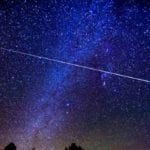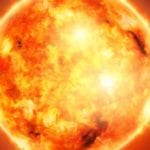 Animals
Animals  Animals
Animals  Gaming
Gaming 10 Game Characters Everyone Hated Playing
 Books
Books 10 Famous Writers Who Were Hypocritical
 Humans
Humans 10 of the World’s Toughest Puzzles Solved in Record Time
 Mysteries
Mysteries 10 Scientific Mysteries We Don’t Fully Understand
 Weird Stuff
Weird Stuff 10 Celebrities Who Have Admitted to Alien Encounters
 Our World
Our World 10 Surprising Secrets of Notre Dame Cathedral
 Miscellaneous
Miscellaneous 10 Intriguing Origins of Popular Carnival Rides
 Weird Stuff
Weird Stuff Ten Unexpected Discoveries Involving Vomit
 Movies and TV
Movies and TV 10 Actors Who Almost Didn’t Take Career-Defining Roles
 Animals
Animals 10 Amazing Animal Tales from the Ancient World
 Gaming
Gaming 10 Game Characters Everyone Hated Playing
 Books
Books 10 Famous Writers Who Were Hypocritical
Who's Behind Listverse?

Jamie Frater
Head Editor
Jamie founded Listverse due to an insatiable desire to share fascinating, obscure, and bizarre facts. He has been a guest speaker on numerous national radio and television stations and is a five time published author.
More About Us Humans
Humans 10 of the World’s Toughest Puzzles Solved in Record Time
 Mysteries
Mysteries 10 Scientific Mysteries We Don’t Fully Understand
 Weird Stuff
Weird Stuff 10 Celebrities Who Have Admitted to Alien Encounters
 Our World
Our World 10 Surprising Secrets of Notre Dame Cathedral
 Miscellaneous
Miscellaneous 10 Intriguing Origins of Popular Carnival Rides
 Weird Stuff
Weird Stuff Ten Unexpected Discoveries Involving Vomit
 Movies and TV
Movies and TV 10 Actors Who Almost Didn’t Take Career-Defining Roles
10 Theories on the Sun Space and 2012
In the near future, Earth could be faced with the threat of severe atmospheric activity, including solar explosions, near Earth asteroids, and geological anomalies. The Earth is currently traveling through the geological epoch known as the Holocene period. An epoch is a subdivision of the geologic timescale that is based on the study of rock layering. The Holocene began approximately 12,000 years ago and was preceded by the Pleistocene. The end of an epoch is characterized by extreme climate change and mass extinction. During Earth’s transition into the Holocene, the planet experienced the Quaternary extinction and the Younger Dryas global climate cooling event. Modern research conducted at the Russian Antarctic Vostok Station has suggested that we may soon be reaching the end of the Holocene. This was determined by studying the layers of the Earth’s crust through the process of massive ice core drilling. This revelation is a bit concerning with the current global climate disruption we are experiencing on Earth.
Everyone is familiar with the current 2012 doomsday predictions. In December of 2012, the Mesoamerican Long Count calendar, which was used by several Pre-Columbian Mesoamerican cultures, will reach the end of its 13th baktun. People have predicted that this indicates that a massive geological event will occur on Earth. This article will be examining some theories surrounding the sun, space and the 2012 severe weather patterns. Put yourself in the place of a high level government official. If you had direct information that a cataclysmic event was approaching Earth, would you suppress it from the public or announce it? The obvious answer is to hide it and secretly prepare for a response.
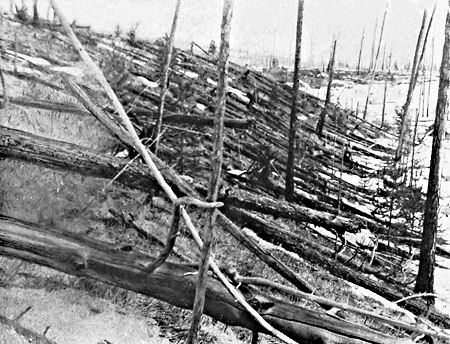
The Holocene Impact Working Group is a collection of scientists from Australia, France, Ireland, Russia and the US, who hypothesize that meteorite impacts on Earth are more common than previously supposed. The group has suggested that the Earth experiences one large global impact every 1,000 years. They claim that the geological formation known as a chevron or a wedge-shaped sediment deposit observed on coastlines, are created by megatsunamis and asteroid impacts. This idea is controversial because other scientists proclaim that there have not been enough large impacts and landslides to explain all the observed chevrons in the world. The Impact Working Group understands that their research contradicts much of what is understood about impacts and tsunamis. However, they have gathered some significant results and located major impact zones on Earth. The most important being the Burckle Crater, which is an undersea crater located to the east of Madagascar and west of Western Australia in the southern Indian ocean. The position of the impact crater was found by the Working Group, based on evidence of prehistoric chevron dune formations in Australia and Madagascar.
The impact zone is very large and estimated to be about 30 km (18 mi) in diameter. The Burckle Crater has yet to be dated by radiometric analysis, but it is strongly believed that the object impacted Earth between the years 2800-3000 BC, which is only 5,000 years ago. Numerous cultures make references to an ancient flood during this time in history and a wide range of events point to a disaster on Earth, including the end of the Early Harappan Ravi Phase, the end of the pre-dynastic “antediluvian” rulers of the Sumerian civilization, the start of the First Dynasty of Kish, and the pre-Xia dynasty rule of the Three Sovereigns and Five Emperors of China. In 2003, another impact zone was revealed off the New Zealand continental shelf. It has become known as Mahuika Crater. The impact zone is over 20 kilometers (12.5 mi) wide and over 153 meters deep. The findings are extremely interesting considering the fact that, around the year 1400, the natives of New Zealand totally abandoned their southern coastal settlements. The event has historically been attributed to an earthquake induced tsunami, but no specific earthquake could be identified. The Mahuika Crater explains the signs of megatsunamis in this area of the world. The massive crater has been dated to around 1443 A.D., which is only 567 years ago. Earth’s most recent encounter with a meteoroid or comet is known as the Tunguska event. In 1908, a large explosion was recorded near the Podkamennaya Tunguska River in Russia.
The blast was measured at between 15-30 megatons of TNT. It was equivalent to the Castle Bravo thermonuclear bomb, tested on March 1, 1954, or about 1,000 times as powerful as the atomic bombs dropped during World War II. The explosion demolished an estimated 80 million trees over 2,150 square kilometers (830 sq mi). The Tunguska event is believed to have been caused by the near air burst of a large meteoroid or comet fragment at an altitude of 5–10 kilometers (3.1–6.2 mi) above the Earth’s surface, meaning that the comet never actually impacted Earth. It is generally believed that the object was approximately 20-40 meters (65-131 feet) across, which is clearly much smaller than the Burckle and Mahuika meteorites. The Tunguska event is the largest impact event over land in Earth’s recent history. However, all Impacts of a similar size over remote ocean areas would have gone unnoticed before the advent of global satellite monitoring in the 1960s and 1970s. In 2002, The B612 Foundation was developed. The B612 is a private foundation dedicated to protecting the Earth from asteroid strikes. Their immediate goal and mission statement is to “significantly alter the orbit of an asteroid in a controlled manner by 2015.”
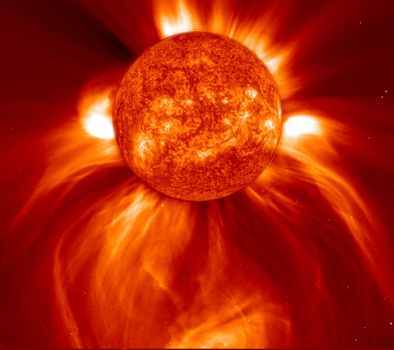
The energy of the Sun supports all life on Earth. The Sun accounts for 99.86% of the total mass of the Solar System and drives the Earth’s climate and weather. It is important that people understand the characteristics of the Sun and how it follows a solar cycle. In 1843, a German astronomer named Samuel Heinrich Schwabe discovered a pattern while observing the Sun over a 17 year period. He noticed a periodic variation in the number of sunspots recorded on the Sun. It has since been realized that sunspots indicate intense magnetic activity on the Sun, creating areas of reduced surface temperature. Sunspots produce solar flares in the regions surrounding them. A solar flare is a large explosion in the Sun’s atmosphere that propels radiation across the electromagnetic spectrum. Solar flares are dangerous and can cause mass bursts of solar wind and even geomagnetic storms on Earth.
Every 10.7 years the Sun passes through a solar cycle. The cycle directly changes space weather patterns and impacts climate on Earth. The solar cycle is marked by two extremes, a solar maximum and a solar minimum. The solar minimum is the period of least solar activity, where the sunspot and solar flare ratio diminishes. The opposite end of the spectrum is the solar maximum, where the Sun is peppered with sunspots, solar flares erupt, and clouds of electrified gas are hurled into space. Since 1755, there have been 23 solar cycles. In 2008, the Earth entered Solar Cycle 24. It is predicted that the solar maximum for cycle 24 will peak in 2013. Solar Cycle 24 has been the center of a heated discussion among the Internet community. Various proponents of the 2012 phenomenon use the cycle as evidence that a cataclysmic doomsday event will occur on Earth. In 2008 and 2009, the Sun experienced a deep solar minimum. This has concerned many scientists, including people like Mike Hapgood, who is the head of the European Space Agency’s space weather team. He has predicted that the resulting solar maximum in 2013 will be the biggest we have seen in 100 years.
In 2009, Hapgood was quoted as saying, “We’re in the equivalent of an idyllic summer’s day. The sun is quiet and benign. The quietest it has been for 100 years, but it could turn the other way.” In 2010, high ranking NASA officials released a disturbing report stating that the Earth could be hit with unprecedented levels of magnetic energy from solar flares during the 2013 solar maximum. The report used the word “super storm” and warned humanity of possible catastrophic consequences for the world’s health, emergency services and national security. Dr Richard Fisher, the director of Nasa’s Heliophysics division has put forth some chilling quotes, “We know it is coming, but we don’t know how bad it is going to be.” It will disrupt communication devices such as satellites and car navigations, air travel, the banking system, home computers, everything that is electronic.”
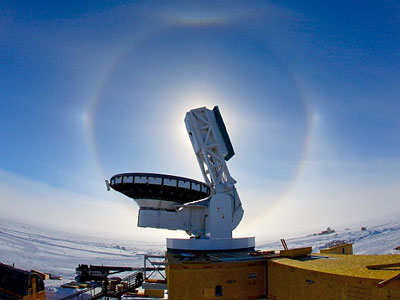
As of early October, 2010, sunspots are regularly appearing on the Sun. Many websites are dedicated to tracking and documenting this activity. Earth is currently in the rising phase of Sunspot Cycle 24 and we are experiencing solar flares and coronal mass ejections. In the last five years, a number of international space experiments have been developed in order to study the Sun and its influence on Earth. NASA is currently conducting a space program named Living with a Star. The goal of the study is to look at many different aspects of the connected Sun-Earth system and to determine how they directly affect life and society. Specifically, how the Sun interacts with space weather and geometric storms. Living with a Star will include Space Environment Test beds, which will be used to test target protocols in space. The first active science mission of the program is named Solar Dynamics Observatory (SDO) and it was launched on February 11, 2010. The goal of the mission is to actively view and photograph the Sun for five years, while it travels through the solar maximum.
The best spot in the world to make intergalactic observations is the South Pole. The Pole’s high altitude and extreme cold weather creates a thinning of the atmosphere. In 2007, the US National Science Foundation completed construction on the South Pole Telescope. The primary goal of the telescope is to conduct space survey’s to examine several thousand clusters of galaxies. In December of 2009, the camera on the telescope was upgraded. Claims have been made that the South Pole Telescope is being used for top secret observations of space asteroids and other celestial bodies. The largest solar flare ever detected came from the star system II Pegasi, which is located 135 light-years away from Earth. II Pegasi is in the constellation Pegasus. In December of 2005, a massive flare was detected in the area of Pegasus. It was derived from a star that is slightly smaller than the Sun. The solar flare was 100 million times more energetic then the typical solar flare viewed on the Sun. It has been estimated that the energy released from the event was equivalent to 50 million trillion atomic bombs. Clearly, this type of disaster would trigger a mass human extinction.
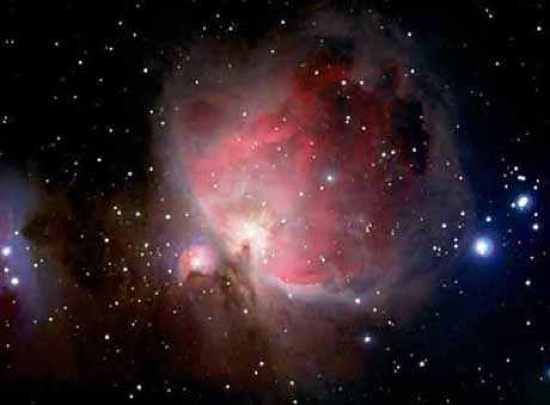
There is something quite strange and eerie about the Orion Nebula. The Orion Nebula is a diffuse nebula situated south of Orion’s Belt. The area is clearly visible to the naked eye and appears as the middle “star” in the sword of Orion. The Orion Nebula is one of the most scrutinized and widely viewed objects in space. The nebula is peppered with a group of massive star formations and it is the closest region of star collections to Earth. It has also been observed that supersonic “bullets” of gas are repeatedly piercing the dense hydrogen clouds of the Orion Nebula. Theories have been listed on the Internet that state that the area surrounding the Orion Nebula contains stars that are dangerous to Earth. Many of these statements stem from a group of YouTube videos and articles suggesting a government cover-up. The videos explore a space coordinate that is located near the Orion Nebula in both Google Sky and the Microsoft space viewer. They claim that specific areas of the sky were purposely blacked out by the business giants.
We are all familiar with the fact that the Maya Long Count calendar ends on December 21, 2012. Apparently, the Maya people of Central America had a folk tale which dealt with Orion’s part of the sky, known as Xibalba. The word is roughly translated as “Place of fear.” Many of the traditional hearths or fireplaces of the Maya people contained a smudge of glowing fire that corresponded with the Orion Nebula. This is strange because some of the greatest astronomers in history, including Galileo who made specific telescopic observations of the area surrounding Orion, did not mention the nebula. In fact, there is no mention of the Orion Nebula prior to the 17th century. This has led to speculation that there is a current flare-up of the illuminating stars in the nebula that has greatly increased the brightness of the area. It also proves that the Maya people had pre-telescopic knowledge of the Orion Nebula. The Orion Nebula has been rigorously studied and photographed by international space programs. Stars in the nebula regularly emit large bursts of stellar wind. In many cases, these massive events are on a larger scale than stellar wind produced by the Sun.
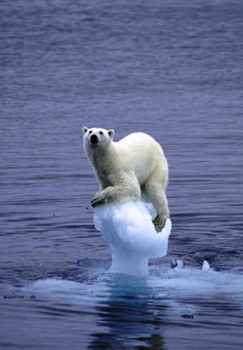
Recent press releases have indicated that the White House would prefer that people start using the term “global climate disruption” instead of the coined “global warming.” The reason being that the phrase “global warming” oversimplifies the problem and makes the situation sound less dangerous than it really is. We are experiencing a change in a wide range of weather patterns and the phenomenon is not just a warming. Anyone who has studied global warming understands this because, from 1998 to 2009, the Earth did not record any increase in global temperatures. This general global cooling was predicted by scientists who study the Earth’s natural weather cycles. In fact, 2007 and 2008 were the coldest years in decades and the use of greenhouse gases has increased.
In December of 2009, supported by mounds of data, 650 of the world’s top climatologists made a presentation at a UN Global Warming conference and voiced their opinion that human-made global warming from the release of greenhouse gases is a media generated myth without scientific basis. Dr. Kunihiko, Chancellor of Japan’s Institute of Science and Technology, has been quoted as saying “CO2 emissions make absolutely no difference one way or the other … every scientist knows this, but it doesn’t pay to say so.” With the coming solar maximum the Earth’s surface temperature is expected to rise over the next couple years. However, scientific literature and text books state that human greenhouse gas emissions are the cause of our current global climate disruption. If this is not true, I can’t imagine why we have all been lied to.
The current opinion surrounding global climate change is evolving and many international polls have reported a significant decrease in the percentage of people who think human-made greenhouse gases are responsible. The data is also location specific, with a larger majority of people in the European Union and Japan showing concern over the Earth’s global climate change, while people in the US and China show the least amount of concern. Like all international polls, media coverage is a strong contributing factor to this data. Theories exist on the web that human-made global warming is a ploy developed by world governments to explain the events that will occur in 2012, as a planetary object approaches Earth and causes its axis to shift. Claims have been made that this will create an increase in world temperatures and cause massive ice glaciers to melt.
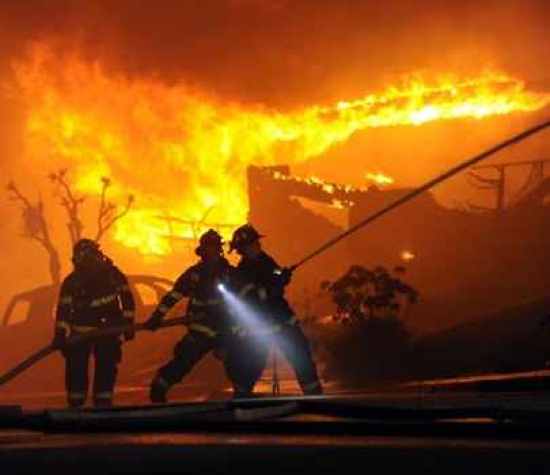
Experimental studies are routinely performed on the Sun in the hopes of better understanding its influence on Earth. Recent research has suggested that the Sun has a greater impact on the Earth’s tectonic movements than originally thought. Scientists have proven that sound generated deep inside the Sun can cause the Earth to shake and vibrate in sympathy. Recently, NASA’s fleet of five THEMIS spacecraft discovered that a certain type of space weather will cause spacequakes, or a tremblor in the Earth’s magnetic field. A spacequake is felt more strongly in the Earth’s orbit, but the destruction is not exclusive to space and can reach the surface of the Earth. The total energy in a spacequake can cause a relatively large earthquake. According to THEMIS, magnetic jets crash into the Earth’s geomagnetic field and the impact sets off a rebounding process, in which the incoming plasma actually bounces up and down on the reverberating magnetic field.
It has been proposed that spacequakes, acting together with Sun vortices, can generate substantial electrical currents in the near-Earth environment, possibly disturbing radio communication and GPS. The 2013 solar maximum will only increase this behavior. In 2010, the world has been hit with a series of devastating earthquakes. The largest examples being the quakes that hit in Haiti and Chile in early 2010. However, as we progress in 2010, earthquakes are becoming more frequent. In January and February, we experienced eight notable earthquakes with a magnitude over 6.0. In August of 2010, there were eighteen such events. Government officials and news outlets continue to publish stories indicating that the 2010 earthquake season shares a similar event ratio to other years. On April 4, 2010, an earthquake of 7.2 magnitude struck Baja California. The following day the Earth experienced one of the largest geometric storms of the year, peaking at a K-index rating of 7. Following the Baja California earthquake, the San Andreas Fault experienced over 500 after-shocks of 2.5 or larger.
The year 2010 has also been littered with an outbreak of pipeline disasters. On September 9, 2010, the city of San Bruno, California, experienced a massive pipeline explosion that resulted in severe damage. Immediately following the accident, US news outlets published many stories questioning the safety of pipelines throughout the country. The San Bruno explosion was caused after the pipeline had severed and released a large amount of natural gas. No reports have been released indicating how the pipeline broke. However, in many similar disasters a small earthquake is responsible for the failure. If the Sun’s solar maximum is capable of forming earthquakes on Earth, then pipeline ruptures may become a major concern. Time will tell if the abundance of earthquakes and pipeline explosions will increase as we reach the 2013 solar maximum.
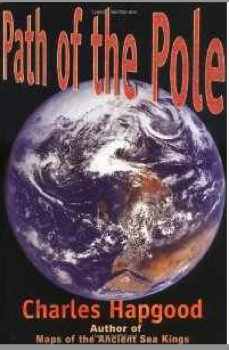
Charles Hapgood was an American academician who developed the cataclysmic pole shift hypothesis. The theory suggests that the Earth’s axis of rotation has shifted numerous times in geological history. Such an event would create calamities on Earth, such as mass floods, earthquakes, and flash freezing. Charles Hapgood was a Harvard graduate and friend of Albert Einstein. In fact, Einstein was extremely intrigued by Hapgood’s research and wrote the foreword for one of his books discussing the topic. Charles Hapgood based many of his ideas on archival maps, which he claims show Antarctica with free flowing rivers. One example is the Piri Reis Map, which shows a vast southern continent similar to Antarctica in shape.
Hapgood argued that the Caribbean section of the map was rotated nearly 90 degrees from the top of South America, giving Earth an “alternate north.” He also uses paleontological data of Woolly Mammoths and other ancient animal species, which have been found in the South Pole, frozen solid with undigested vegetation in their stomachs. This would suggest a single cataclysmic event occurred with such ferocity that it killed these species in their tracks. Charles Hapgood theorized that the earth has gone through three such mass crustal displacements over the last 100,000 years, and, according to his data, the last occurrence was approximately 12,000 years ago. I went searching for more factual based information to support the pole shift hypothesis and came across Vostok Station.

Vostok Station is a Russian Antarctic research center that is located at the southern Pole of Cold. This part of the South Pole holds the lowest measured temperature on Earth. In the 1970s, the former Soviet Union began a project of drilling huge cores into the ice underneath Vostok Station. This activity began to expose subglacial lakes buried in the ice. The largest discovery was Lake Vostok, which is an enormous mass of water that covers an area of 15,690 square kilometers (6,060 sq mi). It is located 4,000 meters (13,000 ft) under the surface of the central Antarctic ice sheet. The lake is one of the most bizarre and influential discoveries in recent history. Small islands have been discovered on Lake Vostok and the water’s temperature is unusually warm with hotspots ranging from 50 to 65 degrees F. This clearly indicates a sub-terranean heat source.
It is quite amazing that underneath the frozen South Pole, an isolated ecosystem has been discovered and samples of unidentifiable bacteria have been removed. Many strange magnetic anomalies have also been recorded near Lake Vostok. This has caused scientists to release statements indicating that the Earth’s core might be thinner near Lake Vostok, but many conspiracy theorists have latched on to the idea that an accumulation of metals, the kind that you would find in an ancient buried city, has caused the magnetic disturbance. The original goal of the ice core drilling was to measure past weather conditions. This was accomplished by Russian scientists and data was gathered stretching back 420,000 years. This data has revealed some concerning facts. Apparently, the Holocene geological epoch which began approximately 12,000 years ago is going to end soon.
The Vostok ice cores have given scientists important data indicating that changes to the Earth’s surface can occur suddenly and violently, which is in direct opposition to the current geological model of gradualism. Scientists predict that the last sudden shift occurred around 13,000 years ago. All of this data supports Charles Hapgood’s ideas surrounding a sudden pole shift hypothesis. A sudden change in the Earth’s alignment relative to the sun would plunge parts of Earth into a perpetual freezing hell. The pole shift hypothesis has gained a substantial Internet following. Claims have been made that the Maya people understood the danger, which may reveal itself as an orbiting planet or asteroid that enters the Earth’s atmosphere on a timed schedule.

The most discussed conspiracy theory surrounding the 2012 phenomenon involves a large planetary object named Nibiru. Claims have been made that this planet is in orbit with the Sun and that it will enter the Earth’s atmosphere causing mass destruction. Nibiru has been used to explain periodic pole shifts and catastrophic events in the Earth’s past. Internet groups have suggested that the Maya people understood the path of Nibiru and predicted when it would approach Earth next. However, the Maya clearly did not have the technical advancements that we do today, so if this is true a massive government cover-up would have to be involved. In 1983, the IRAS mission was launched into space and became the first-ever space-based observatory to perform a survey of the entire sky at infrared wavelengths. It mapped 96% of the sky four times. The observatory made media headlines briefly in 1983 with the discovery of an “unknown object” that was at first described as “possibly as large as the giant planet Jupiter and possibly so close to Earth that it would be part of this solar system.” However, later analysis is said to have revealed this report to be false.
In 1984, world leaders decided that it was time to create a global seed bank and began to store seeds in an abandoned coal mine at Svalbard, located on the Norwegian island of Spitsbergen, which is 1,300 kilometers (810 mi) from the North Pole. The Svalbard Global Seed Vault officially opened on February 26, 2008. Under high security, the facility preserves a wide variety of plant seeds in an underground cavern. It stores approximately 1.5 million distinct seed samples of agricultural crops. The mission of the vault is to provide a safety net against accidental loss of diversity, with an emphasis on a possible global catastrophe. In 1894, Bostonian astronomer Percival Lowell became convinced that the planets Uranus and Neptune had slight discrepancies in their orbits. He concluded that the gravitational pull of the two planets are being influenced by a more distant object.
Astronomers point to the fact that such an object so close to Earth would be easily visible to the naked eye. People have responded by claiming that the object has been hiding behind the Sun for several years, and has recently become visible, revealing itself as a second Sun. Thousands of pictures exist on the Internet claiming to have captured Nibiru, but it is hard to judge the reality of these photographs because adding a second Sun in Photoshop is simple. People have also claimed that the recently discovered dwarf planet Eris is in fact Nibiru. Eris is the largest known dwarf planet in the Solar System and the ninth-largest body known to orbit the Sun directly. Because Eris is 27% larger than Pluto, it was initially described as the “tenth planet” by NASA and in media reports after its discovery. Certain websites have released postings claiming that Eris will reach its closest point to Earth around 2012 and cause major problems for our gravitational pull.

It is no secret that humans’ hold a heavy reliance towards electronic devices. Since the invention of the computer, technical networks have been developed and aspects of many countries infrastructure use electricity. It is also a fact that electricity is sensitive to magnetic energy. As the Earth enters the heavy portions of the 2013 solar maximum, we will be left susceptible to possible geometric storms. In 2007, NASA launched the THEMIS satellites. The goal of the space program was to study energy releases from the Earth’s magnetic surroundings. One of the THEMIS satellites discovered a breach in the Earth’s magnetic field. This breach has caused NASA to release documents stating that during Solar Cycle 24 the atmosphere might experience a higher intensity of geomagnetic storms. Geometric storms are associated with solar flares and are generated by a solar wind shock wave that strikes the Earth’s magnetic field. The solar wind pressure changes the electric currents in the ionosphere, causing a magnetic storm on Earth.
If we experience a significant amount of geomagnetic storms in the atmosphere then huge levels of radiation will be displaced. On Earth, the major concern will be direct damage to world power grids, communication satellites, and all things electrical. As a human population, we need to start considering scenarios where large areas of land will lose power for a long time. One potential hotspot is northern Europe and Britain, who apparently hold “fragile” power grids. The National Academy of Sciences has released various statements on the situation. One indicates that GPS navigation, air travel, financial services and emergency radio communications could “all be knocked out by intense solar activity.” Your government is aware of the situation, but it seems that the mainstream media was not given the memo. The US government has said that “contingency plans were in place to cope with the fallout from such a storm.” This includes allowing certain electrical transformers to be turned off for a period of time. The National Risk Register in Britain has similar plans in case of an electrical disaster.
In 1989, an electromagnetic storm disrupted power throughout most of Quebec and caused visual aurora as far south as Texas. The worst recorded solar storm in history occurred in 1859 during solar cycle 10. During the storm, auroras were seen around the world and telegraph systems failed all over Europe and North America. Telegraph pylons began to physically spark and caused major fires and damage. Apparently, 18 hours before the storm’s onset, a massive solar flare was seen exploding towards Earth. It has become known as the Carrington Super Flare. During the 1859 solar maximum, numerous large solar flares were recorded, including the Steward Super Flare. In August of 2010, the Sun experienced four large Coronal mass ejections directed towards Earth. The solar flares possessed enough energy to cause aurora to be observed by the naked eye. The event caused scientists to reaffirm that these types of occurrences can greatly damage infrastructure, such as power grids and telephone lines not adequately protected against induced magnetic current.



